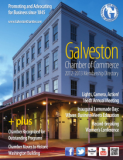Galveston’s historic neighborhoods provide homeowners many unique opportunities. With hundreds of historic structures on the National Register of Historic Places, and thousands of historic houses, Galveston is one of the country’s most important concentrations of late 19th- and early 20th-century architecture. From stately mansions to quaint cottages to the conversions of downtown buildings to residential lofts, Galveston’s older neighborhoods offer a wide range of housing options to fit any budget.
Galveston Historical Foundation, a non-profit organization, advocates for the preservation of the Island’s historic buildings and neighborhoods, as well as maritime history. This advocacy translates into a number of different programs that include management and interpretation of historic sites and maritime vessels to educational programs for adults and children.
One of the most active divisions of the organization is the preservation outreach to historic neighborhoods and owners of historic properties. Preservation Services volunteers and staff manage these preservation programs, including rehabilitating houses for low- and moderate-income owners, reclaiming architectural salvage for the resale at their Architectural Salvage Warehouse, and offering assistance in the research and maintenance of local historic properties.
New programs work to educate owners about green building techniques that complement the preservation of historic structures, such as energy audits, conservation methods and hazard mitigation strategies. Galveston Historical Foundation, the oldest historic preservation organization in Texas, was chartered in 1871 to preserve Galveston’s history. GHF maintains its administrative offices at the 1861 Custom House at 20th and Postoffice streets.
Modern homes on Offatts Bayou or raised homes overlooking the beach or bay are available for homebuyers more attracted to waterfront property. From new single-family residences on the beach to condos in restored historic buildings, many new projects have begun and many are on the horizon for housing on Galveston Island.
The Island also offers more traditional housing – ranch-style homes built from the 1950s to 1980s – in neighborhoods throughout much of
the Island. Galveston Island subscribers to Galveston Association of Realtors MLS have reported sales are continuing to improve since the recovery from Ike. From January 1, 2011 through December 31, 2011, 539 residential homes were sold on Galveston Island through MLS. The average sale price for a home was $234,526 and the median price was $180,000 (the condominium average was $142,960). A three-bedroom, two-bath home with a garage and 1,600 to 1,800 square feet of living space sells for an average price of $140,400 if located from east Galveston to the west end of the seawall, and $327,100 if located west of the end of the seawall.
 Renters also find a variety of housing styles from which to choose. Because rental property is in high demand, plan on allowing at least a month to find the place just right for you. Houses are available for rent, as well as a large number of attractive loft apartments that have been created on the second and third stories of Victorian buildings downtown. Many apartment complexes, both large and small, round out the Island’s rental market. The median cost of a 900-squarefoot apartment is about $615 per month.
Renters also find a variety of housing styles from which to choose. Because rental property is in high demand, plan on allowing at least a month to find the place just right for you. Houses are available for rent, as well as a large number of attractive loft apartments that have been created on the second and third stories of Victorian buildings downtown. Many apartment complexes, both large and small, round out the Island’s rental market. The median cost of a 900-squarefoot apartment is about $615 per month.
Island real estate agents or an apartment locator service will be glad to assist you in finding a home, apartment or condominium that fits your needs, budget and lifestyle. Throughout the Island, neighborhoods are tight-knit and friendly. For example, neighborhood groups are active in litter cleanup and crime watch programs. Successful neighborhood watch programs bring neighbors together and help them protect themselves against potential problems such as thefts and burglaries.
Crime, a concern of everyone in the U.S. today, is no different in Galveston than any other community its size, police say. The Galveston Police Department has embraced the principles of community-oriented policing in an effort to partner with the citizens of Galveston for a meaningful reduction in crime. The city has been very carefully divided into patrol areas unique to the neighborhoods in those areas. Crime prevention initiatives have been developed in each of those areas that emphasize programs for youth, the elderly, code enforcement, narcotics, prostitution, graffiti and other nuisance crimes that result in a deterioration of our neighborhoods.


